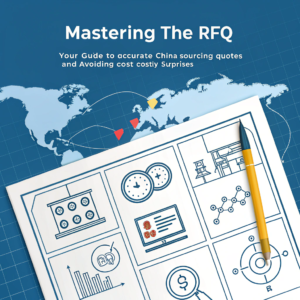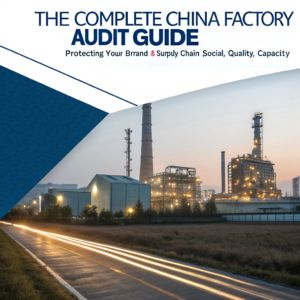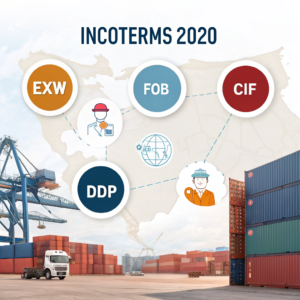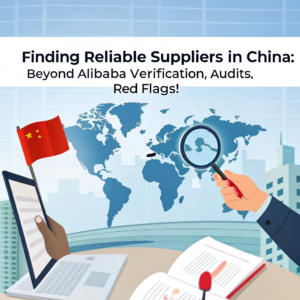Introduction
As the world’s second-largest economy and a major manufacturing hub, China has become an increasingly attractive sourcing destination for international buyers. However, navigating the complexities of Chinese procurement can be a daunting task for those unfamiliar with the market. From supplier selection and negotiation tactics to quality control and communication barriers, there are numerous factors to consider when sourcing products from China.
In this comprehensive guide, we’ll explore the ins and outs of Chinese procurement, equipping you with the knowledge and strategies needed to effectively source products from the Middle Kingdom. Whether you’re a seasoned buyer or new to international sourcing, this post will provide you with valuable insights to help you avoid common pitfalls and maximize the benefits of working with Chinese suppliers.
Understanding the Chinese Procurement Landscape
The Sheer Scale of the Chinese Market
China’s manufacturing prowess is undeniable, with the country producing a vast array of products across a wide range of industries. From textiles and electronics to machinery and automotive parts, the scale of China’s industrial output is truly staggering. This presents both opportunities and challenges for international buyers.
On the one hand, the sheer number of suppliers and the competitive nature of the Chinese market can make it easier to find products at competitive prices. However, the vast scale of the market also means that navigating supplier selection and quality control can be complex and time-consuming.
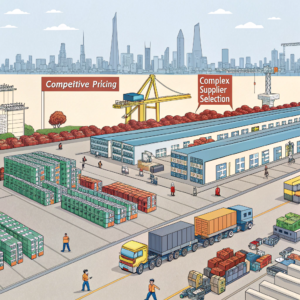
Diverse Supplier Landscape
China’s supplier landscape is highly diverse, ranging from large, state-owned enterprises to small, family-owned workshops. This diversity can be both a blessing and a curse for international buyers. While it offers a wide range of options, it also means that the quality, reliability, and capabilities of suppliers can vary significantly.
Careful supplier vetting and due diligence are essential to ensuring that you partner with a reputable and capable supplier who can meet your specific requirements. This may involve conducting on-site visits, reviewing production capabilities, and checking references to ensure that the supplier is a good fit for your business.
Navigating Cultural and Communication Barriers
One of the most significant challenges faced by international buyers sourcing from China is the cultural and communication barriers. Differences in language, business practices, and cultural norms can make it difficult to establish effective working relationships with Chinese suppliers.
Effective communication is crucial in the procurement process, from initial negotiations to ongoing quality control and order management. Investing time and resources in building strong relationships with your Chinese suppliers, as well as developing an understanding of cultural nuances, can go a long way in overcoming these barriers and ensuring a successful partnership.
Supplier Selection: Finding the Right Partner
Identifying Potential Suppliers
The first step in the Chinese procurement process is to identify potential suppliers. This can be a daunting task, given the sheer number of manufacturers and the varying levels of quality and reliability.
One effective approach is to leverage online directories and trade shows to research and identify potential suppliers. Platforms like Alibaba, Global Sources, and HKTDC can provide a wealth of information on Chinese manufacturers, including their product offerings, capabilities, and certifications.
Additionally, attending industry-specific trade shows in China can be an excellent way to connect with potential suppliers, learn about the latest trends and technologies, and assess the quality of their products firsthand.
Vetting and Evaluating Suppliers
Once you’ve identified a pool of potential suppliers, the next step is to thoroughly vet and evaluate them to ensure they meet your quality, cost, and delivery requirements. This process should involve a comprehensive assessment of the supplier’s capabilities, including:
- Production Capacity: Ensure the supplier has the necessary equipment, facilities, and workforce to handle your production volume and meet your delivery timelines.
- Quality Control: Evaluate the supplier’s quality control processes, including their use of quality assurance tools, testing procedures, and quality certifications (e.g., ISO, IATF, etc.).
- Financial Stability: Assess the supplier’s financial health and stability to ensure they have the resources to fulfill your orders and withstand any market fluctuations.
- Compliance and Certifications: Verify that the supplier has the necessary licenses, permits, and certifications to operate legally and ethically in China.
- Reputation and References: Check the supplier’s reputation by reviewing online reviews, industry references, and customer testimonials.
By thoroughly vetting and evaluating potential suppliers, you can identify the most reliable and capable partners to work with, reducing the risk of quality issues, delivery delays, and other procurement challenges.
Negotiating Terms and Conditions
Once you’ve selected a suitable supplier, the next step is to negotiate the terms and conditions of your partnership. This can be a delicate process, as Chinese suppliers may have different expectations and negotiation tactics compared to what you’re used to in your home market.
Some key considerations when negotiating with Chinese suppliers include:
- Pricing: Be prepared to negotiate on pricing, but also be mindful of the supplier’s cost structure and profit margins. Avoid pushing for unreasonably low prices, as this may compromise quality or lead to other issues.
- Payment Terms: Negotiate favorable payment terms, such as a deposit upfront and the remainder upon delivery or after a certain period. Be cautious of suppliers who demand full prepayment, as this can increase your risk.
- Quality Assurance: Establish clear quality control measures and procedures, including the right to conduct inspections, reject non-conforming products, and impose penalties for defects.
- Delivery and Logistics: Agree on specific delivery timelines, shipping methods, and any penalties for late or incomplete deliveries.
- Intellectual Property Protection: If your products involve proprietary designs or technologies, ensure that the supplier has robust measures in place to protect your intellectual property.
Effective negotiation requires a deep understanding of Chinese business culture, as well as the ability to navigate potential language and cultural barriers. Developing a collaborative and trust-based relationship with your supplier can go a long way in ensuring a successful procurement partnership.
Ensuring Quality and Compliance
Implementing Quality Control Measures
Maintaining consistent product quality is a critical concern for international buyers sourcing from China. Given the diverse supplier landscape and varying levels of quality control, it’s essential to implement robust quality assurance measures throughout the procurement process.
Some key quality control strategies include:
- Pre-Production Inspection: Conduct a thorough inspection of the supplier’s production facilities, equipment, and processes to ensure they meet your quality standards.
- In-Process Inspection: Establish regular on-site inspections or remote monitoring to verify that the production process is adhering to your quality specifications.
- Final Inspection: Perform a comprehensive inspection of the finished products before shipment to identify and address any quality issues.
- Third-Party Inspection: Consider engaging a reputable third-party inspection service to provide an independent assessment of the supplier’s quality control measures and the final products.
By implementing a comprehensive quality control framework, you can mitigate the risk of receiving defective or non-conforming products, ensuring that your customers receive the high-quality goods they expect.
Ensuring Regulatory Compliance
In addition to quality control, international buyers must also ensure that their Chinese suppliers are complying with all relevant regulations and industry standards. This includes compliance with:
- Product Safety and Certification: Verify that the supplier’s products meet the necessary safety standards and certifications required in your target markets (e.g., CE, UL, RoHS, etc.).
- Environmental Regulations: Ensure that the supplier’s manufacturing processes and facilities adhere to environmental protection laws and regulations in China.
- Labor and Social Compliance: Confirm that the supplier’s labor practices and working conditions meet international standards for worker rights and safety.
- Customs and Import/Export Regulations: Understand the import/export requirements and documentation needed to facilitate the smooth and compliant movement of goods across borders.
By proactively addressing compliance requirements, you can mitigate the risk of legal and reputational issues, while also demonstrating your commitment to ethical and sustainable sourcing practices.
Managing Communication and Relationships
Overcoming Language and Cultural Barriers
Effective communication is essential to the success of any procurement partnership, but it can be particularly challenging when working with Chinese suppliers. Language differences, cultural nuances, and varying business practices can all contribute to misunderstandings and breakdowns in communication.
To overcome these barriers, consider the following strategies:
- Hire Bilingual Procurement Specialists: Employ team members who are fluent in both English and Mandarin Chinese, and who have a deep understanding of Chinese business culture.
- Utilize Translation Services: Invest in professional translation services to ensure clear and accurate communication during negotiations, contract discussions, and ongoing order management.
- Familiarize Yourself with Chinese Business Etiquette: Learn about Chinese business customs, such as the importance of building personal relationships, the role of hierarchy and seniority, and the significance of gift-giving.
- Encourage Cultural Exchange: Organize regular in-person or virtual meetings to foster a deeper understanding of each other’s cultures and business practices.
By prioritizing effective communication and cultural awareness, you can build stronger, more trusting relationships with your Chinese suppliers, leading to better collaboration and more successful procurement outcomes.
Maintaining Strong Supplier Relationships
Establishing and maintaining strong relationships with your Chinese suppliers is crucial for the long-term success of your procurement partnership. Here are some key strategies to help you build and nurture these relationships:
- Develop Personal Connections: Make an effort to get to know your supplier’s key personnel on a personal level, such as by attending social events or exchanging gifts during important holidays.
- Demonstrate Commitment and Loyalty: Show your suppliers that you are a reliable and committed partner by consistently meeting your contractual obligations, providing accurate forecasts, and avoiding sudden changes or cancellations.
- Offer Feedback and Collaboration: Provide constructive feedback to your suppliers and work with them to address any issues or areas for improvement. Collaborative problem-solving can strengthen the partnership.
- Recognize and Reward Performance: Acknowledge and reward your suppliers’ efforts, such as by offering incentives for on-time delivery, high-quality products, or innovative solutions.
- Invest in Supplier Development: Consider providing training, resources, or technical assistance to help your suppliers improve their capabilities and better meet your needs.
By cultivating strong, trust-based relationships with your Chinese suppliers, you can foster greater transparency, flexibility, and mutual success in your procurement operations.
Conclusion
Sourcing products from China can be a complex and challenging endeavor, but with the right strategies and a deep understanding of the Chinese procurement landscape, international buyers can unlock significant benefits. From effective supplier selection and quality control to overcoming communication barriers and nurturing strong supplier relationships, this guide has provided you with a comprehensive framework to navigate the intricacies of Chinese procurement.
As you embark on your sourcing journey in China, remember to remain adaptable, patient, and committed to building collaborative partnerships with your suppliers. By doing so, you can unlock access to a vast pool of high-quality, cost-effective products, while mitigating the risks and challenges inherent in international procurement.
Ultimately, successful Chinese procurement is not just about finding the right suppliers – it’s about fostering a deep understanding of the market, cultivating trust-based relationships, and continuously refining your strategies to stay ahead of the curve. By applying the insights and best practices outlined in this guide, you’ll be well on your way to becoming a savvy and successful international buyer in the Chinese market.


